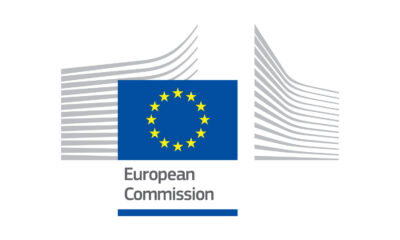Travel
This ski slope has stunning views over Lake Como. But has climate change made it too low for snow?
Activists in the Alps argue there’s no point in spending public money on snowless resorts. Instead, they want investment in sustainable mountain tourism.
On a cloudy October morning, local activists walked to the top of Monte San Primo, in northern Italy, to oppose the renovation of a decommissioned ski resort.
With a summit at 1,685 metres in the Italian Alps, just an hour from Milan, Monte San Primo offers a panorama over iconic Lake Como.
But the beautiful landscape is littered with decaying ski infrastructure. Three ski lifts, which haven’t been used for years, stand out on the mountainside. Next to them, a snow cannon is surrounded by growing vegetation.
At the same time as the Monte San Primo protest, demonstrations were staged simultaneously across the Alps and the Apennines. All opposing other short-sighted and invasive investments in Italy at a time when the climate crisis casts doubt on the sustainability of winter sports.
What do the activists want?
The activists are protesting the use of public funds to renovate the old, low-altitude ski equipment. They argue it will all be useless soon anyway, as global temperatures rise.
Local authorities plan to spend €5 million on new lifts, a bob and tubing area, a reservoir for artificial snowmaking and a bigger car park.
“It’s out of date. Even in terms of profitability, these lifts don’t make sense anymore,” says Roberto Fumagalli, President of the Coordinamento Salviamo il Monte San Primo or the ‘Committee to save Monte San Primo’. It brings together 33 grassroots organisations pushing to stop the project.
The activists want the old ski lifts to be dismantled. They believe the funds would be better used to clean up the hiking trails, improve public transport and maintain the surrounding woodland, all while supporting slow forms of tourism.
Facing a future of warmer, snowless mountains
Many ski resorts in Italy were built in the 1960s and 70s. San Primo became popular a little earlier, in the late fifties, but as the years passed by it fell out of favour. They have barely been any skiers here since 2013.
“Here we are just above 1,000 metres. Even if you use artificial snow, it takes one sunny day to melt it,” says Antonio Bertelé, a protester who learned to ski in the seventies on the slopes of San Primo. “It’s just absurd to invest in ski tourism here.”
In Italy, there are 249 decommissioned ski resorts, and 138 are temporarily closed. 84 are open only intermittently and 181 are surviving through public funding, according to a survey from Legambiente, a leading Italian environmental NGO.
“High altitude facilities will live longer, but they must diversify anyway. But those at a low altitude simply live in the illusion of a great snowfall,” says Vanda Bonardo, head of the Alps division of Legambiente.
Last winter, in many Alpine ski resorts tourists skied on streaks of artificial snow cutting through the grass. According to the Copernicus Climate Change Service, 2022 was Europe’s second warmest year on record. Data from CNR-ISAC showed that last year was the hottest and driest in Italy since 1800.
“If you look at the historical series since 1850, the general trend is towards an increase in temperature and a decrease in snowfall. There are more and more warm years that break the records of previous years,” says Antonella Senese, a glaciologist at the University of Milan.
In the Alps, temperatures increased more than double compared to the average. According to Legambiente, out of 224 mountain municipalities located in or near ski resorts, 22 experienced an increase of 3 degrees or more between 1961 and 2018.
As global heating intensifies, the permanence of snow on the soil is also impacted. Between 2000 and 2019, snow cover patterns in the greater Alpine region above 3,000 meters showed a significant reduction with an average of minus 17 days per decade, Senese explains.
Artificial snow is not a solution
Mountain areas are intensively exploited to feed the ski industry. A few weeks ago, environmentalists staged a demonstration at Lago Bianco, an alpine lake located in a nature reserve, after bulldozers started drilling and digging around it to pump water for the snow cannons of the Santa Caterina di Valfurva ski resort.
In Italy, 90 per cent of slopes are covered with artificial snow. The percentage is much lower in other Alpine countries, with Austria using it for 70 per cent of its pistes and Switzerland and France respectively for 70 per cent and 50 per cent.
Artificial snowmaking involves building pipes and basins, impacting the environment, depleting water resources and adding on energy costs.
Sustainable tourism is the answer
Instead of exploiting mountains through ski tourism, some places have started investing in year-round tourism with snowshoeing, mountain biking, trekking, climbing, or cultural activities involving local food and traditions.
Valpelline, a valley in Valle d’Aosta, has no ski lifts. Instead tourists can enjoy family-run accommodation, huts, and activities where farmers, artisans, and hosts team up to promote responsible tourism immersed in nature, while respecting the local community.
Similarly in Piedmont, Valle Maira is an isolated valley that has long been off the radar of intensive tourism. The valley lacks ski infrastructure and, after years of depopulation, is flourishing thanks to sustainable practices.
“Sustainability has three core aspects: environmental, economic, and social,” says Raffaele Marini, president of the mountain environment protection commission at the Italian Alpine Club. “Winter tourism must head towards diversification, avoiding flow peaks concentrated in a few spaces and in a short time.”
But mitigation and adaptation are also required from tourists.
From the top of Monte San Primo, Fumagalli points to the area where the new lifts are planned. Then he looks at the lake and the mountains around him before enjoying his lunch after the long hike. “There is no need for hit-and-run tourism here,” he says.
Travel
New competitors could slash Channel Tunnel rail fare by 30 per cent in the next 15 years
In the next 15 years, passengers on the Channel Tunnel rail line could triple, while fares could fall by almost a third.
These are the findings of a new report conducted by consultancy Steer and commissioned by London St Pancras Highspeed, owner of the tracks and station serving the Channel Tunnel.
The study forecasts a rise in passenger numbers from the current level of 11 million a year to 35 million by 2040.
This anticipated growth, along with increased competition on the route, could drive fares down by up to 30 per cent, the analysis concludes.
Plans are already in motion to double the international passenger capacity at St Pancras. At present, it supports up to 1,800 international passengers per hour, but the operator wants to see this increased to as many as 5,000 passengers an hour.
To facilitate this, London St Pancras Highspeed and Eurotunnel are collaborating to shorten journey times, improve timetable coordination and introduce more frequent services. Modifications to the station itself include reconfiguring existing spaces and constructing new facilities to cope with more passengers.
Why can we expect Channel Tunnel fares to decrease?
The 30 per cent fare reduction is projected to come as a result of increased competition and the growth in demand for rail travel through the Channel Tunnel.
Currently, Eurostar is the sole operator on the Channel Tunnel route. As with any business existing in a monopoly, fares and pricing in the absence of competition become artificially inflated.
With new operators vying to get their trains on the route, more options will stimulate competition, naturally driving down prices.
There are also the economies of scale to consider. The expected growth in demand could mean the overall cost per passenger for operators will decrease. Fixed costs of train operation can be spread across a larger number of passengers, allowing companies to price their fares a little lower.
Adding to the potential for cheaper cross-channel rail connections are new financial incentives introduced by London St. Pancras Highspeed.
Under the International Growth Incentive Scheme, new and existing operators on the HS1 line can unlock rebates of £1 (€1.17) per additional passenger carried, which will be paid into a joint fund for marketing and growing passenger demand.
New services can attract discounts on the fees for using the line of up to 50 per cent in year one, 40 per cent in year two and 30 per cent in year three.
The report leans heavily into the shift in consumer behaviour and the move towards more sustainable travel options. As the passenger base increases, operators will be able to offer lower fares and compete more fairly with budget airline options.
Which train operators are bringing the competition to the Channel Tunnel
The Channel Tunnel has been open to competitors since 2010, but the high costs of launching services and acquiring trains to run the route have deterred new operators from competing.
Recent regulatory changes and the launch of incentives have seen a newfound interest in cross-channel rail services, and several operators have already thrown their hats in the ring to operate services.
The Virgin Group has stated a desire to launch cross-channel train services by 2029. Discussions are already underway for a fleet of trains to operate the service.
Competing for access is a Spanish-led consortium known as Evolyn. The company wants to launch high-speed services between London and Paris and has indicated it has reached an agreement with Alstom to purchase 12 high-speed trains for the service.
Also in the mix is a start-up called Gemini Trains. led by Lord Tony Berkeley, a British aristocrat and former Eurotunnel engineer. Gemini has applied for an operator’s license to service Paris, Strasbourg, Cologne, and Geneva with a fleet of 10 trains by 2029.
Most recently, Italian state railway Ferrovie dello Stato Italiane has been revealed to be studying cross-channel services and is working with Evolyn towards this goal.
Other operators have previously expressed an interest in open access to the Channel Tunnel. Deutsche Bahn showcased a high-speed train at London’s St Pancras in 2010, signaling its intent to connect London with destinations in Germany, such as Frankfurt and Cologne. However, it has not yet officially joined the bidding war for services.
Where could you go via the Channel Tunnel, and when?
While discussions are still at early stages, the proposed new competitors on Channel Tunnel services could open direct rail connections to many more European cities from London.
Paris is a key destination and will provide direct competition with Eurostar. Ferrovie, Virgin Group and Evolyn have all mentioned Paris services in their communications to date.
As well as this, Virgin wants to connect London with Amsterdam and Brussels, while Getlink wants to run services directly to German and Swiss cities, including Frankfurt, Cologne, Geneva, Zurich, and Milan.
Most of the companies are targeting a launch between 2029-2030. However, Evolyn is aiming for a more ambitious 2026 start, though this timeline may prove optimistic given the challenges of entering the market.
From finding space for storage and maintenance of trains to money for the purchase of the equipment itself, the barriers to entry remain high.
Positive signals were received in early April when the UK’s Office of Road and Rail concluded that Eurostar must provide access to new operators at Temple Mills depot, a significant hurdle for any new operator. It also said the fees on the HS1 line were too high at €30 per mile – the most expensive in Europe.
Virgin Group declared this to be “a green signal for competition,” although Eurostar maintains Temple Mills is at capacity and can’t support even one new operator.
New trains in the Channel Tunnel will take time, but increased competition will undoubtedly serve to lower prices for the traveling public.
In addition to lower fares, increased competition could significantly reduce the carbon footprint of travel as more passengers opt for this low-emission option. High-speed rail can reduce CO2 emissions by up to 90 per cent compared to flying.
Travel
Barcelona to create special selfie zone to curb tourist chaos at Sagrada Familia
In front of Barcelona’s Sagrada Familia, gaggles of tourists pose for selfies. They crowd the pavement before the famous Gaudí-designed basilica and even step into the road for a better angle.
This quest for an Instagram-worthy photo comes at the expense of residents’ daily lives.
For over a decade, locals have lambasted the crowds of visitors that obstruct the passage of pedestrians and hold up traffic around the religious site.
Barcelona city authorities have now unveiled plans to corral selfie-snapping visitors into a dedicated area to ease the congestion.
As one of Spain’s hotspot destinations, it is the latest measure from officials to regulate tourism in the city.
Sagrada Familia selfie space will ‘reconcile tourists and the neighbourhood’
Barcelona city council has announced it will construct a special zone beside the Sagrada Familia where visitors can take a breather – and a selfie – before entering the church.
The 6,200-square-metre ‘anteroom’ will be located between the Nativity façade of the basilica and Plaça Gaudí on Carrer de la Marina.
Until recently, Plaça Gaudí had been exploited by tourists for a TikTok trend that caused considerable disruption.
It involved visitors balancing their phones on metro escalators to film themselves while the iconic monument appeared in the background. The trend led to tourists clogging station exits and was eventually banned.
“The new project helps to resolve a space where it is difficult to reconcile uses between visitors to the temple and the neighbourhood,” the city council said in a press release.
Construction on the gathering zone is scheduled to begin after the summer and be finished by April 2026 to coincide with the 100th anniversary of Gaudí’s death.
The €2.7 million project is part of a wider €15.5 million plan to improve infrastructure and visitor management around the sacred site.
The Sagrada Familia attracts 4.7 million visitors a year and is the second most visited site in Spain, after the Alhambra in Granada.
‘Tourism needs to be serving the city’s model’
Now drawing 32 million visitors a year, Barcelona has previously introduced several measures to curb overtourism.
In 2024, the city launched a €44 million plan to regulate crowds in 16 tourist hotspots by deploying more cleaners and police officers to maintain order and safety.
Last July, the city abandoned its ‘Visit Barcelona’ slogan of 15 years in favour of the new ‘This is Barcelona’, marking a rebranding which shifts the destination away from mass tourism.
Barcelona has also pledged to ban short-term apartment rentals to tourists by 2028 and cap cruise ship disembarkations.
Speaking after the announcement last year, the city’s mayor Jaume Collboni said the decision came in response to the risk of Barcelona becoming a “theme park” devoid of residents.
“Tourism needs to be serving the city’s model, not the opposite,” he added.
Travel
You’ll need to book via app to visit these spectacular beaches in Sardinia this summer
One beach on the Italian island of Sardinia will only be accessible to visitors by booking through an app this summer.
Crescent-shaped Tuerredda beach has already been capping visitor numbers at 1,100 per day since 2020.
The new digital measure, expected to be in place by July, aims to ease the strain on local resources and infrastructure.
Many of Sardinia’s spectacular beaches are protected from overtourism with similar restrictions, with transgressors facing fines of up to €3,500.
The island’s coastline is renowned for its pristine stretches of sand and is frequently voted as one of the top places in Italy for a seaside holiday.
But it has also been suffering due to disrespectful visitor behaviour and overcrowding.
Here are all the places where the island has limited access or introduced regulations to safeguard its most popular beaches.
Spiaggia Rosa: €3,500 for stealing sand
The Spiaggia Rosa, located on the outlying Budelli island, draws thousands of tourists a day in summer to admire its magnificent pink sand. But visitors can only see the picturesque sands from a distance on a boat.
Because of the beach’s fame, it has been closed off to visitors since the mid-1990s after its coveted sand began to disappear. The local government took action after tourists were found to be smuggling kilos worth away as souvenirs.
Local authority regulations now mean walking on the beach will land you a €500 fine, while anyone caught stealing the sand will have to pay up to €3,500.
La Maddalena, Cala Coticcio and Cala Brigantina are capping visitor numbers
In the archipelago of La Maddalena, two beaches now have restricted access. Last year, only 60 people a day could visit Cala Coticcio and Cala Brigantina over the summer.
Travellers needed to book their slot online and pay €3 per person to access the beaches with a guide.
The visitor limit and access fee have not yet been announced this year, but visits will likely need to be booked by contacting a local guide directly like last year.
Several other beaches around the island now only allow access to a limited number of visitors.
In the north, Cala Brandinchi and Lu Impostu will limit numbers to 1,447 and 3,352 respectively between 1 June and 30 September. Visitors also need to book via the San Teodoro app or on the dedicated website.
At Cala Mariolu, 700 people are allowed per day between June and early November.
In Villasimius in the southeast, beachgoers heading to Punta Molentis, Riu Trottu and Portu Sa Ruxi are required to pay to access the car park. Each vehicle costs €10 with an additional €1 for each passenger. Cyclists and pedestrians pay €3.
Staff are stationed at car parks and beach access points to check tickets.
Beach towels banned on Pelosa beach
On the west coast, Stintino’s famed Pelosa beach is now only open to a limited number of visitors per day. A maximum of 1,500 people are allowed to access the beach daily. Last year, visitor numbers reached as many as 4,000 on some days.
Those looking to sunbathe on Pelosa beach need to book a ticket costing €3.50. Regulations also state that visitors can only use beach towels if they place mats underneath them, which trap less sand.
Ogliastra: Time limits for beachgoers
In Ogliastra on the east coast, 300 people a day are permitted on Cala Birìala and beachgoers who arrive by boat can only stay for 90 minutes.
Similarly, visitors to Cala dei Gabbiani are also capped at 300. Last year, visitors had to leave after two hours.
How is Italy clamping down on overtourism?
Sardinia joins several other popular tourist destinations that have introduced restrictions as a result of overcrowding.
Venice now has a booking system and fee to visit the city. In the Italian Riviera town of Portofino, tourists lingering too long and blocking streets face fines of €270.
-

 EU & the World6 days ago
EU & the World6 days agoWho Is Buying TikTok? What Might Happen to the App
-

 Politics6 days ago
Politics6 days agoWinners of 2025 EU prize for women innovators announced
-

 Health & Society6 days ago
Health & Society6 days agoHealing from Within – The Science Behind Anti-Inflammatory Diets
-

 EU & the World4 days ago
EU & the World4 days agoWhat Is World Health Day? Learn About the Observation
-

 Politics6 days ago
Politics6 days agoThe transformative power of AI
-

 Politics6 days ago
Politics6 days ago6 tips to spot and stop information manipulation
-

 EU & the World7 days ago
EU & the World7 days agoMyanmar & Thailand Earthquake: Updates on Damage, Deaths, and More
-

 EU & the World7 days ago
EU & the World7 days agoInside the glam – Celebrity style moments that ruled the red carpet









